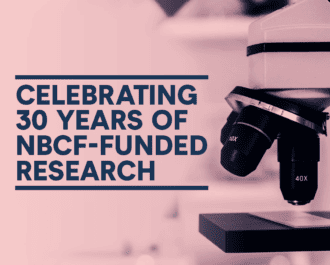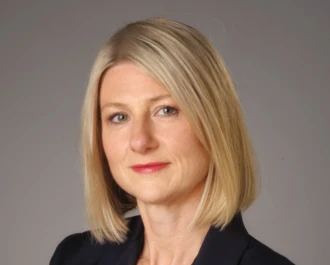 Treat
Treat
An Australian imaging device that can prevent the need for repeated breast cancer surgery has been fast tracked towards commercialisation by the United States Food and Drug Administration (FDA).
The breast probe, a handheld device used directly by surgeons, is used to detect remaining cancer cells during surgical removal of a tumour. It uses a technique called “quantitative micro-elastography (QME) imaging”, which identifies microscopic “stiffer” areas of cancerous tissue amongst the healthy breast tissue. The device aims to improve the likelihood that surgeons can remove all the tumour in the first surgery.
The probe was invented by Dr Brendan Kennedy and colleagues, from the Harry Perkins Institute of Medical Research and The University of Western Australia in Perth, partly through funding from a 2015 NBCF Innovator Grant. It is now being commercialised by a WA medical technology company called OncoRes Medical.
The new designation of a “breakthrough device” means that the FDA have deemed it potentially capable of providing more effective treatment of breast cancer than available techniques. This is certainly backed up by the data to date, with studies showing that a bench-top implementation of the technique has 96% accuracy in detecting tumour.
Currently, one in five women who undergo a lumpectomy will require a repeat surgery. OncoRes Chief Medical Officer and breast surgeon Professor Christobel Saunders explained that there is a great need for this device in surgical care.
“The problem with breast cancer surgery is that it’s particularly difficult to know whether you’ve removed all the tumour or not,” she said. “You’re basically operating blind; you’re removing what you can feel. You can never tell whether all of the tumour is removed at the microscopic level – what that means is that for a lot of women there will be another surgery.”
Dr Kennedy, who is a Co-Founder of OncoRes Medical, explained that the device will be applicable for many forms of cancer.
“We really see that the technology we are developing is a platform technology. Breast cancer, because of the size of that problem, is our first target, but once we have successfully established a market in this area, we can move towards brain cancer, lung cancer and a range of different diseases. The key thing is that cancer invariably makes tissue stiffer, and that is what we can pick up with this device.”
More News Articles
View all News Treat
Treat

